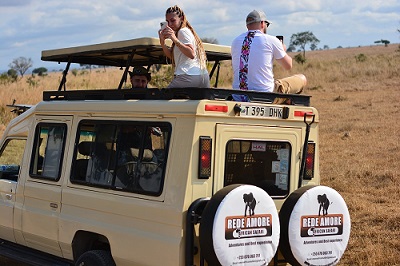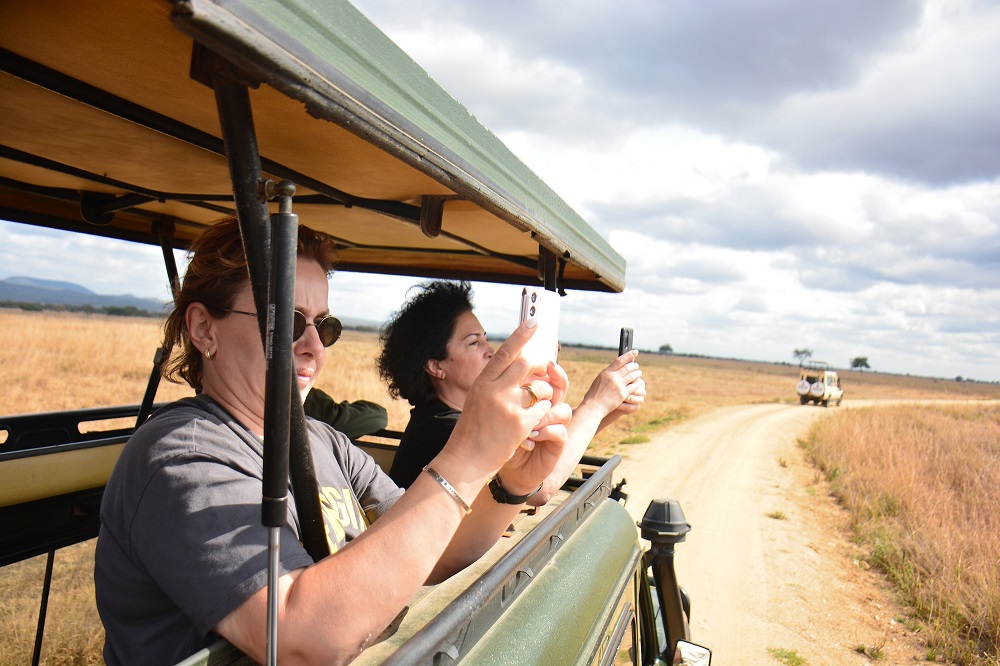
Amazing Big Five safari in Tanzania: Feel Africa Where Nature and Culture Unite
Experience the Excitement of a Big Five Safari in Tanzania. Observe lions, leopards, elephants, rhinos, and buffalo across Tanzania National Parks.
Customer Reviews
4.9
Connect with Africa’s Greatest Wildlife Adventure- Track the Legendary Big Five
A Big Five Safari in Tanzania is one of the most thrilling adventures in Africa. Tanzania is home to vast national parks filled with breathtaking landscapes, endless savannahs, dense forests, and spectacular lakes. The Big Five animals-lion, leopard, elephant, buffalo, and rhino roam freely, providing visitors with unmatched wildlife experiences.
Tanzania is also one of the few countries where you can see all five in a single safari. Along with wildlife, travelers enjoy cultural experiences with Maasai and Hadzabe communities, hot air balloon rides over the Serengeti, and luxurious lodge stays surrounded by nature.Whether you are a first-time traveler or a seasoned safari enthusiast, Tanzania offers the perfect combination of wildlife, adventure, and natural beauty for an unforgettable experience.
What Are the Big Five?
The “Big Five” originally referred to the five most challenging animals to hunt on foot. Today, it represents the most iconic animals to spot on a safari. Each has unique behaviors and habitats:
1. Lion – The King of the Serengeti
Lions are the most famous of the Big Five and stand for strength, courage, and leadership. Tanzania is home to large lion populations in the Serengeti National Park, Ngorongoro Crater, and Tarangire National Park, making it one of the best places in the world to see them up close. Lions live in prides, which are family groups made up of several related females, their cubs, and a few dominant males. They are mostly active at night, but in the mornings and evenings, you can often see them resting under acacia trees, playing with each other, or hunting together in groups.
Fun fact: Male lions can weigh up to 250 kg (550 lbs), and prides are usually led by a dominant male. Cubs are cared for by the whole pride and learn how to hunt by watching and playing with the adults. Seeing lions in the wild is a truly unforgettable experience for anyone on safari.
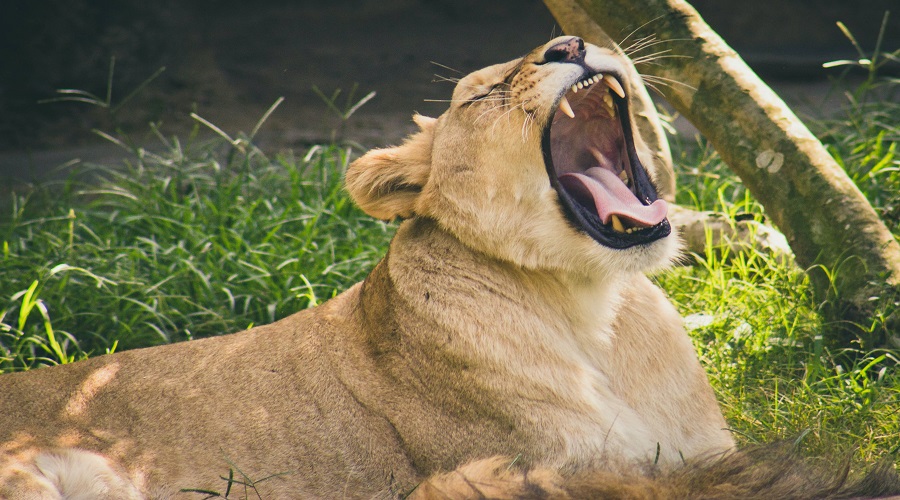
2. Leopard – The Mysterious Hunter
Leopards are shy, solitary, and mysterious animals that spend much of their time resting in trees to stay safe from lions, hyenas, and other predators. Because they are quiet and careful hunters, leopards are hard to spot, which makes every sighting a special and exciting moment. The best places to see leopards in Tanzania are the Serengeti, Ngorongoro Crater, and Lake Manyara National Park, where their natural habitats include woodlands, rocky outcrops, and riverine forests.
Leopards are mostly active at night (nocturnal), hunting silently with incredible stealth and precision. They are very strong and agile, capable of jumping long distances and climbing trees even with heavy prey. Female leopards are devoted mothers, carrying their cubs in their mouths to keep them safe while moving between hiding spots. Cubs stay with their mothers for up to two years, learning hunting and survival skills.
Fun fact: Leopards can carry prey twice their own body weight into trees to eat safely, away from other predators. Spotting a leopard resting on a branch, moving silently through the grass, or dragging prey into a tree is one of the most thrilling experiences on any safari.
.jpg)
3. Elephant – The Gentle Giant
Tanzania is home to some of the largest elephant populations in Africa, especially in Tarangire National Park, Serengeti, and Selous (Nyerere) Game Reserve. Elephants are highly intelligent, gentle, and social animals that travel in family herds led by a wise matriarch, usually the oldest and most experienced female. These herds include mothers, calves, and young elephants, all moving together for protection, food, and water.
Fun fact: Elephants have an amazing memory and can remember water sources, migration routes, and dangers over long distances. Seeing a herd of elephants in their natural habitat is not just a wildlife encounter, it’s a moment that connects you with the heart of Africa.

4. Buffalo – The Powerful Grazer
African buffaloes are strong, social, and fearless animals that are known for their unpredictable nature and impressive stamina. They usually move in large herds, which provides protection against predators like lions and hyenas. Herds can include hundreds of buffaloes, creating a strong, united group that is difficult for predators to attack.
Fun fact: Buffaloes have curved, massive horns that grow continuously throughout their lives and can weigh up to 90 kg (200 lbs). Seeing a herd of buffaloes in the wild is an amazing safari experience, showcasing the raw strength and social bonds of Africa’s wildlife.
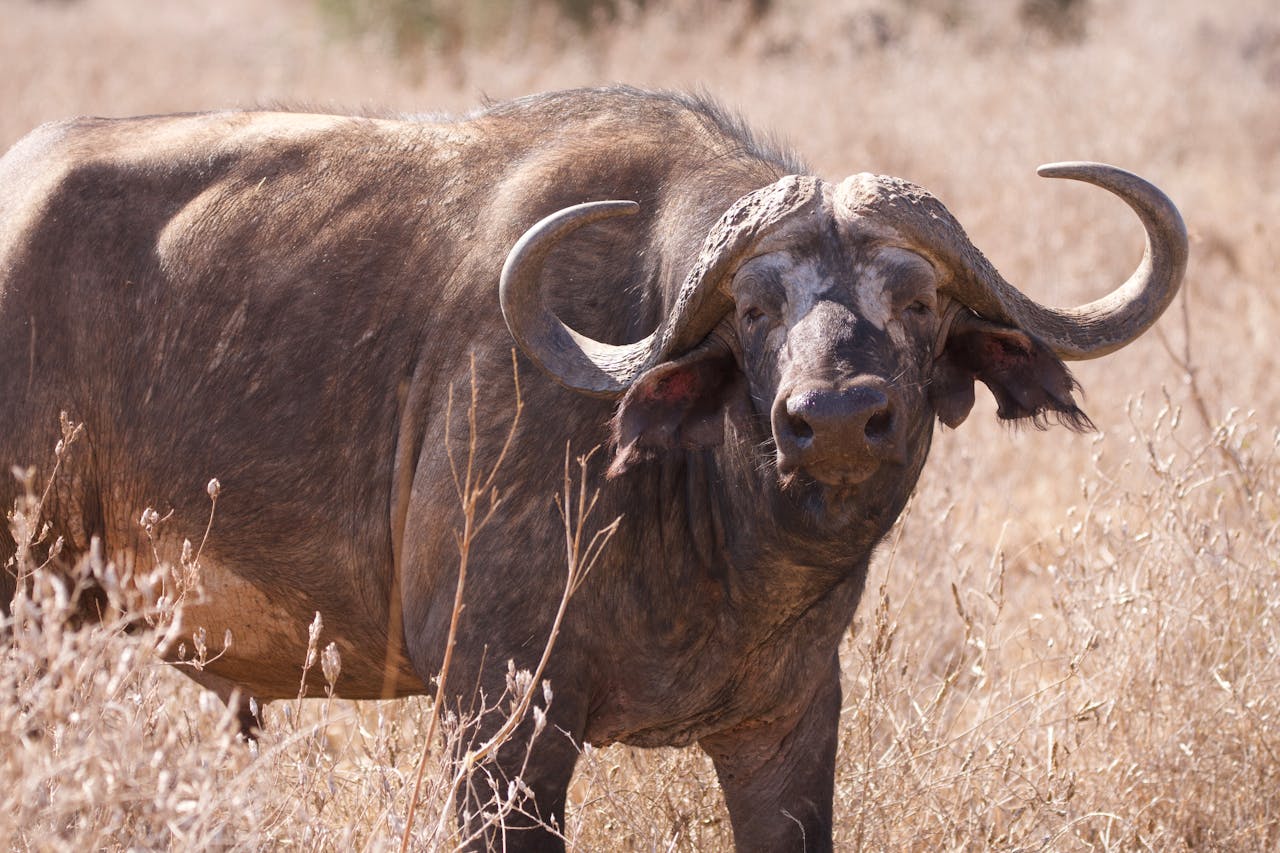
5. Rhino – The Rare and Precious Giant
The black rhino is critically endangered, making it the rarest and most precious of the Big Five. Tanzania’s Ngorongoro Crater is one of the best places to see them safely, as the area is strictly protected and carefully monitored by wildlife conservation teams. Rhinos are mostly solitary animals, with adult males and females usually keeping to themselves except during mating or when mothers are raising calves.
Fun fact: Rhinos have thick, protective skin but very poor eyesight, so they rely heavily on their keen sense of hearing and smell to detect danger. Seeing a black rhino in its natural habitat is a once-in-a-lifetime safari experience that highlights the importance of wildlife conservation.
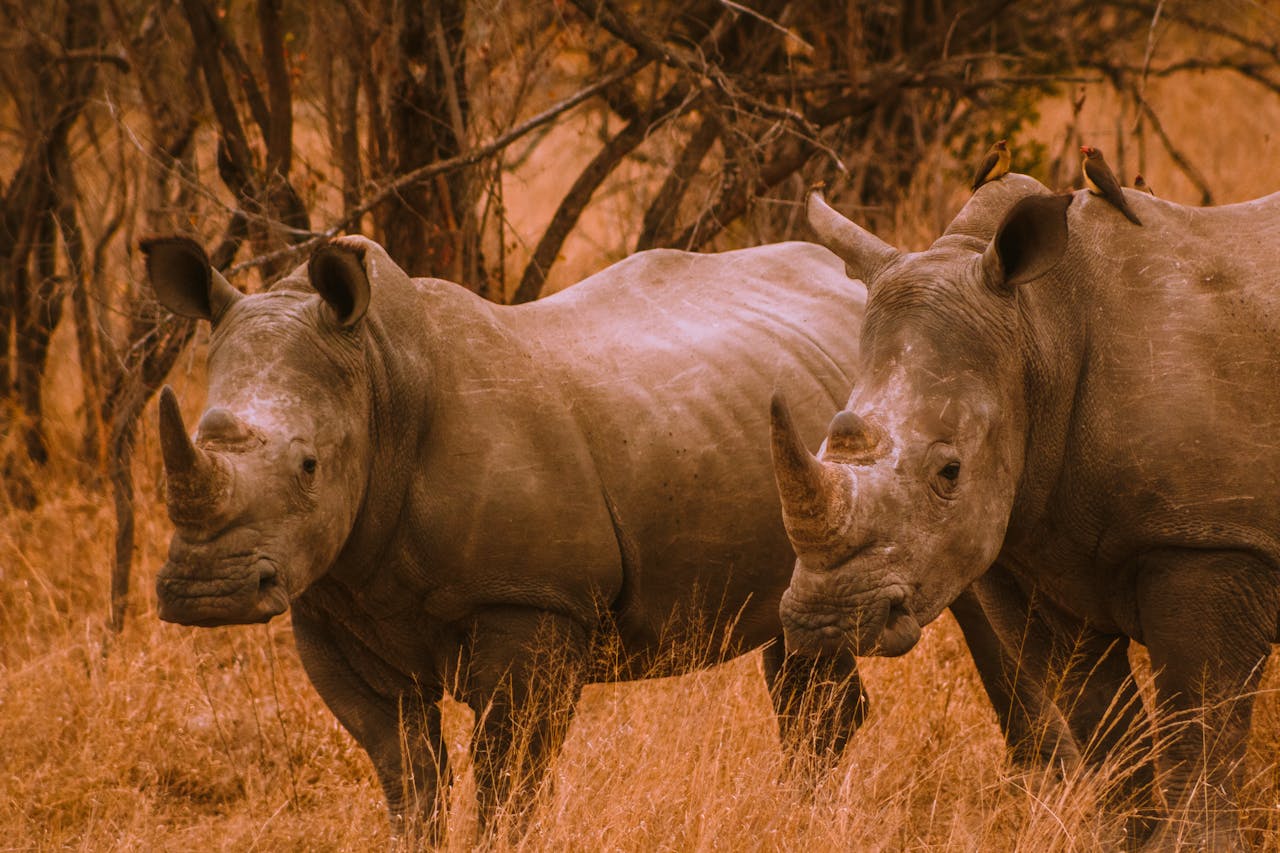
Best National Parks to See the Big Five in Tanzania
1. Serengeti National Park
The Serengeti National Park is the most famous park in Tanzania and one of the best places in the world to see the Big Five. Covering 14,750 sq km of endless savannah plains, woodlands, and rivers, it is home to over 3 million animals, including lions, leopards, elephants, and buffaloes. The Serengeti’s vast open landscapes and diverse habitats make it perfect for wildlife viewing, photography, and safari adventures.
One of the park’s greatest attractions is the Great Wildebeest Migration, which occurs from June to August. During this time, millions of wildebeest, zebras, and gazelles move across the plains in search of fresh grass, creating one of the most spectacular wildlife events on Earth. This migration also attracts predators like lions, leopards, and cheetahs, offering visitors exciting opportunities to observe hunting and survival in action.
The Serengeti can be explored in many ways. Game drives allow you to get close to animals safely, while guided walking safaris let you discover smaller wildlife, tracks, and plants up close. For a truly unforgettable experience, hot air balloon rides provide a breathtaking aerial view of the plains at sunrise, often followed by a champagne breakfast in the wild. Every visit to the Serengeti promises unmatched adventure and magical wildlife encounters.
2. Ngorongoro Crater
Known as the “Eighth Wonder of the World”, Ngorongoro Crater is a UNESCO World Heritage Site and one of Tanzania’s most spectacular safari destinations. The crater is a 26 km-wide volcanic caldera formed millions of years ago, creating a natural enclosure that is home to a rich variety of wildlife. The crater floor is home to all Big Five animals, as well as zebras, hippos, flamingos, and more than 500 species of birds, making it one of the most biodiverse areas in Africa.
Ngorongoro Crater is perfect for first-time safari visitors because it offers easy access to wildlife in a relatively compact area, combined with breathtaking scenery of the crater walls, open plains, and forested areas. Early morning game drives are the best time to spot lions hunting, rhinos grazing, and elephants roaming, as animals are more active during cooler hours. The crater also provides opportunities for photography, nature walks, and cultural visits to Maasai villages along its rim, adding depth to your safari experience.Visiting Ngorongoro is not just about seeing animals; it is about experiencing the unique balance of wildlife, geology, and local culture, all in one magical location. Every moment in the crater offers unforgettable views and wildlife encounters, making it a must-visit destination on any Tanzania safari.
3. Tarangire National Park
Tarangire National Park is famous for its large elephant herds and iconic giant baobab trees, which create a stunning and unique landscape. Covering approximately 2,850 sq km, the park is home to a wide variety of wildlife, including lions, buffaloes, giraffes, zebras, leopards, and over 500 bird species, making it a paradise for nature and wildlife lovers.
During the dry season (June–October), animals gather near the Tarangire River, which serves as a crucial water source. This concentration of wildlife makes it much easier to spot elephants, lions, buffaloes, and giraffes compared to other times of the year. Tarangire is also less crowded than the Serengeti, providing a more private and relaxed safari experience, perfect for travelers seeking tranquility and close encounters with wildlife.Visitors can enjoy morning and evening game drives, guided walking safaris, and photography opportunities among the baobab trees and open savannahs. Watching elephants roam beneath the towering baobabs or observing predators quietly stalking prey gives visitors a real sense of Africa’s wild beauty.
4. Lake Manyara National Park
Lake Manyara National Park is smaller than Tanzania’s other parks but is incredibly unique and full of surprises. It is world-famous for its tree-climbing lions, a rare and fascinating behavior where lions rest on acacia branches to escape heat or hunt from above. The park is also home to flamingo-filled lakes, which create breathtaking pink reflections during the wet season, making it a paradise for photographers and nature lovers.
Besides lions and flamingos, Lake Manyara is home to hippos, elephants, buffaloes, giraffes, and baboons, allowing visitors to spot multiple Big Five animals in a single day. The park’s diverse landscape includes lush forests, grassy plains, and soda lakes, offering a picturesque and varied safari experience.
Lake Manyara is perfect for morning and afternoon game drives, birdwatching, and nature walks. Its smaller size means you can cover much of the park in one day, making it ideal for travelers with limited time who still want to experience Tanzania’s rich wildlife and scenic beauty.
5. Nyerere (Selous) National Park
For a wild, off-the-beaten-path safari, Nyerere National Park (formerly Selous Game Reserve) is the perfect destination. It is Africa’s largest protected wildlife area, covering over 50,000 sq km, and is less visited than the Serengeti or Ngorongoro, offering a truly private and adventurous safari experience.The park is famous for its river safaris along the Rufiji River, where you can observe wildlife from boats, including hippos, crocodiles, elephants, and buffaloes, all while enjoying the peaceful river scenery. Traditional game drives across the park’s grasslands, woodlands, and forests allow visitors to spot lions, leopards, and rare antelopes roaming freely in their natural habitat.
Nyerere also offers incredible birdwatching opportunities, with over 440 bird species, including fish eagles and kingfishers. Its remote location means you can experience authentic African wilderness, with fewer tourists and a more intimate connection to nature. Whether you choose a river safari or land-based game drive, Nyerere provides a unique and unforgettable safari adventure in Tanzania.
Best Time to Go on a Big Five Safari
• Dry season (June–October):
This is the most popular time for safaris in Tanzania because the weather is dry and sunny, making it easier to spot wildlife. During this period, animals gather around waterholes and rivers, which increases your chances of seeing the Big Five and other wildlife. The roads in the parks are also easier to drive on, allowing smooth and comfortable game drives. This is the best season for photography, as the clear skies and golden landscapes provide perfect lighting for your safari photos.
• Wet season (November–May):
The wet season brings lush green landscapes, flowing rivers, and blooming flowers, creating a stunning and vibrant backdrop for your safari. There are fewer tourists, so you can enjoy a more private and peaceful experience. This season is also perfect for seeing baby animals, as many species give birth during the rains. The wet season is ideal for birdwatchers, with migratory and resident birds filling the skies and lakes with color.
• Great Migration (June–August):
The Great Wildebeest Migration is one of the most incredible wildlife events on Earth. During these months, millions of wildebeest, zebras, and gazelles move across the Serengeti plains in search of fresh grass. This journey attracts predators like lions, leopards, and cheetahs, giving visitors the chance to witness dramatic hunting scenes in the wild. It is a once-in-a-lifetime experience and one of the main reasons many travelers plan their safari during this period.
Activities and Experiences of a Big Five Safari
A Tanzania safari offers more than just driving around:
Morning and Evening Game Drives:
Morning and evening game drives are the best times to spot active wildlife, as animals are most alert while searching for food and water. During these cooler hours, you can often see predators hunting, elephants drinking at waterholes, or lions resting in the shade. Game drives allow you to cover large areas of the parks safely and provide excellent opportunities for photography and close-up wildlife experiences.
Walking Safaris:
Guided walking safaris give you a closer and more personal experience withnature. Walking with an experienced guide, you can explore animal tracks, smallerwildlife, insects, and plants that are often overlooked during vehicle safaris. This is also a chance to learn about the ecosystem, survival strategies of animals, and thenatural history of the parks.
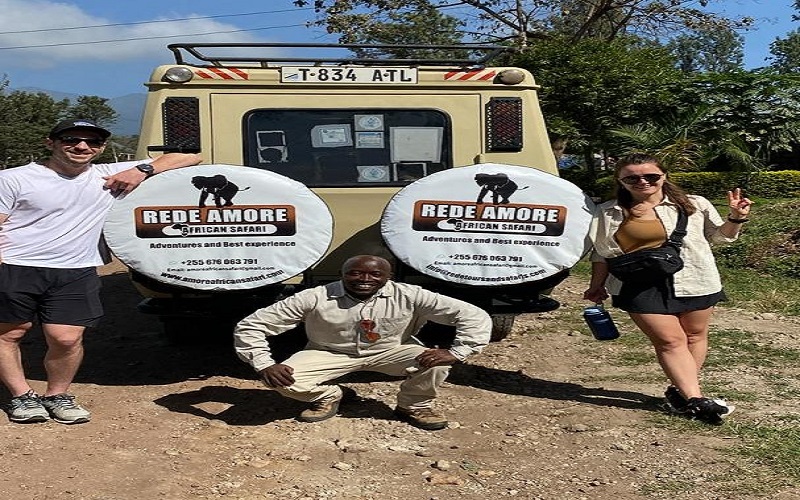
Cultural Visits:
A Tanzania safari is not just about wildlife, it’s also about connecting with localcommunities. Cultural visits allow you to interact with Maasai or Hadzabecommunities, learn about their traditions, daily life, and how they live in harmony with nature. Visitors can see traditional dances, try local foods, and even learn about tribal hunting techniques or cattle herding practices, making the safari a richer andmore meaningful experience.
.jpg)
Birdwatching:
Tanzania is a birdwatcher’s paradise, home to over 1,000 bird species. Parks like Lake Manyara, Tarangire, and the Serengeti are filled with flamingos, fish eagles, weaver birds, and many migratory species. Birdwatching offers a calm andrewarding way to enjoy the parks, whether you are an avid birder or just enjoy observing colorful and unique wildlife.
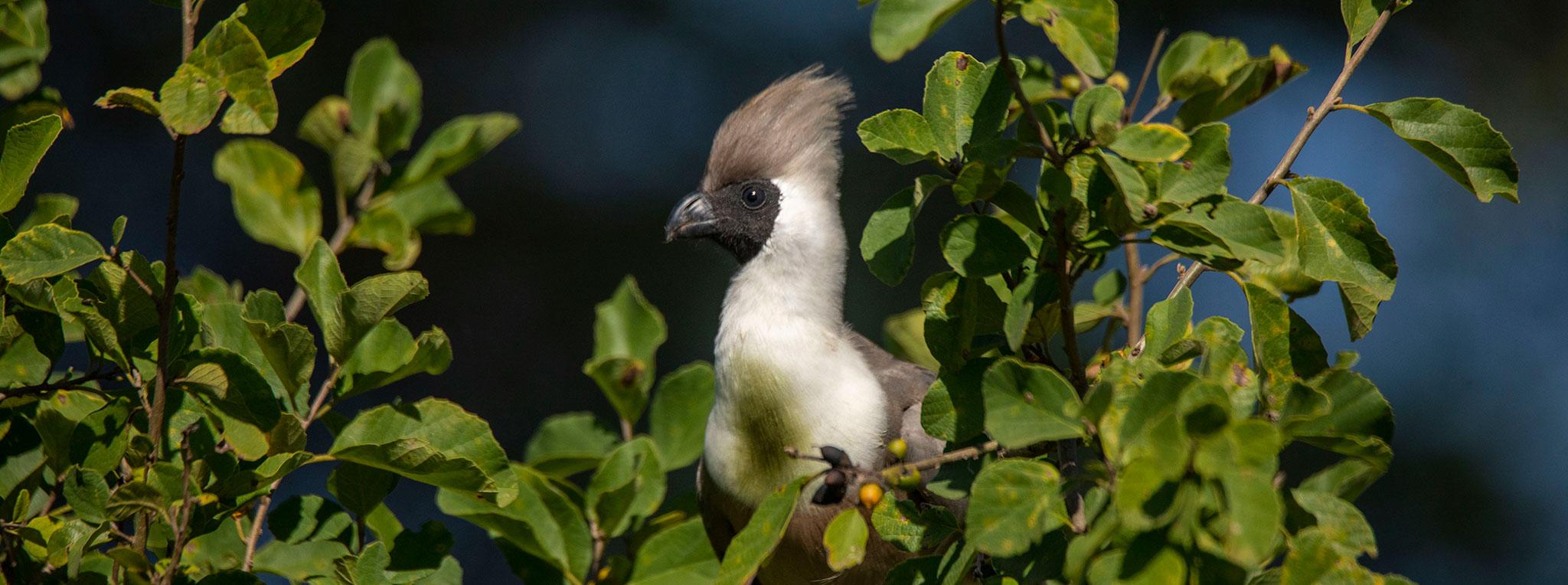
Hot Air Balloon Rides:
For a luxury safari experience, hot air balloon rides over the Serengeti plains provide breathtaking aerial views of wildlife and landscapes at sunrise. From above, you can watch herds of wildebeest, zebras, and elephants moving across the plains. Many balloon safaris include a champagne breakfast in the wild, making it a romantic andunforgettable adventure.
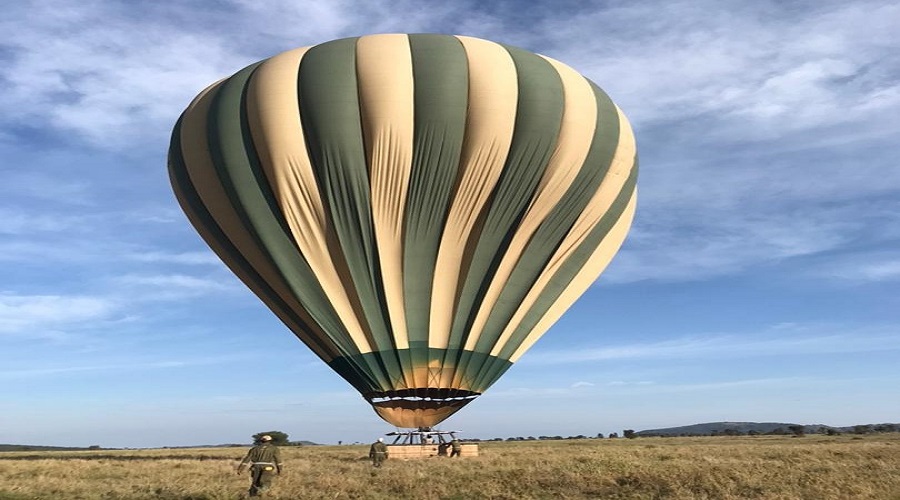
Night Drives:
Night drives offer a thrilling look at nocturnal wildlife that is rarely seen during the day. Guides take you through the parks after dark to spot animals like leopards,hyenas, bush babies, and porcupines, giving you a unique and excitingperspective on Tanzania’s wilderness. It’s an adventure that adds a completely differentdimension to your safari experience.
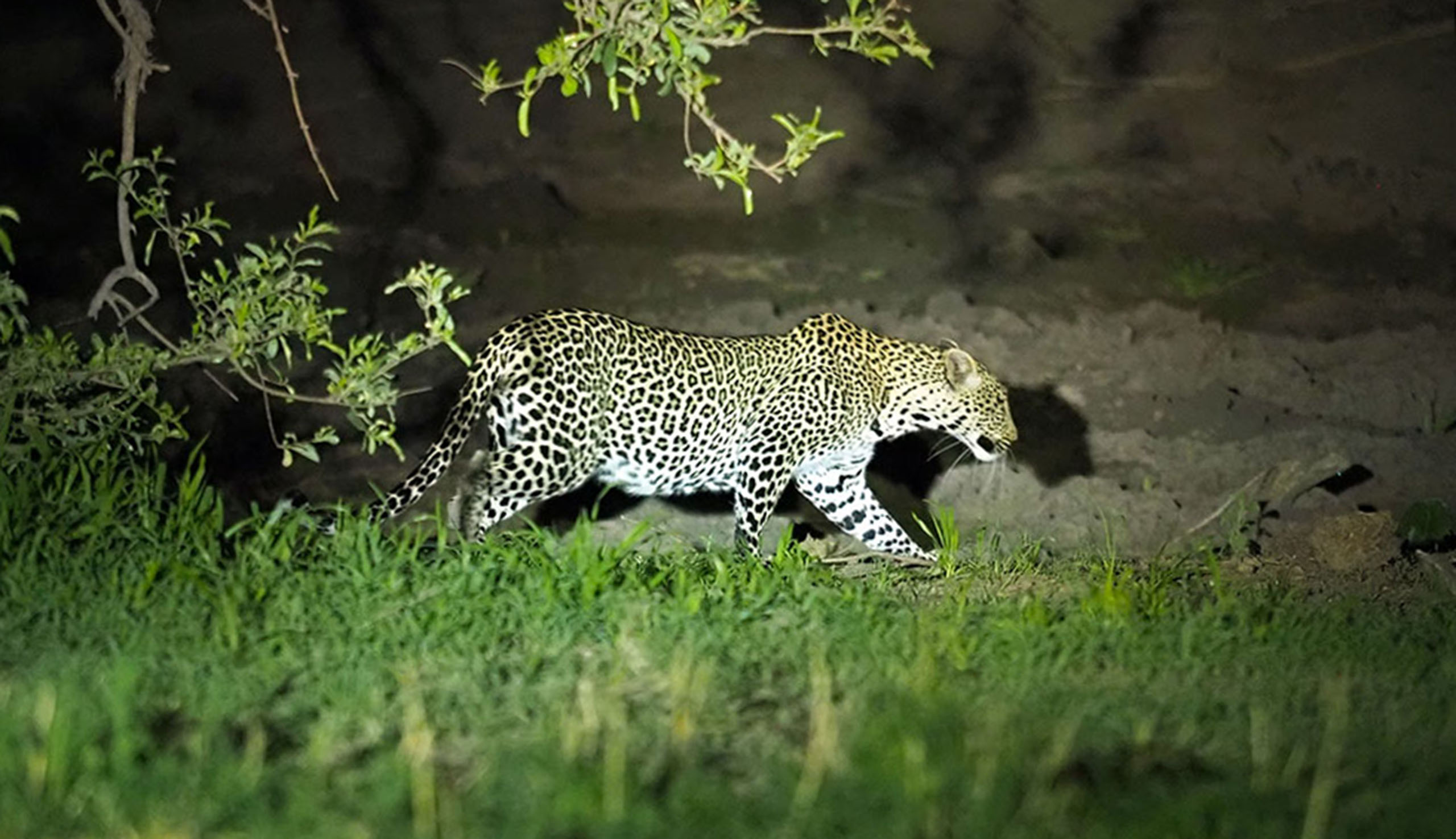
Where to Stay – Safari Lodges and Camps
Tanzania offers various accommodation options for all budgets:
Luxury Lodges:
For travelers seeking ultimate comfort and exclusive experiences, luxury lodges in Tanzania provide world-class accommodation with stunning views of wildlife. Four Seasons Safari Lodge, Singita Grumeti, and Ngorongoro Serena Safari Lodge are among the most popular. These lodges offer spacious rooms or suites withprivate decks, gourmet dining, swimming pools, spa services, and sometimes even directaccess to wildlife viewing areas. Staying in a luxury lodge means you can enjoy the best safari experience while being surrounded by nature, often with guided game drives and expert trackers included in your package.
Midrange Camps:
Midrange camps like Fig Tree Lodge, Kati Kati Tented Camp, and Tumbili Camp provide comfortable and authentic safari experiences at a more affordableprice. These camps usually feature tented accommodations or cottages, blending modern amenities with a sense of adventure. Guests can enjoy daily game drives, walkingsafaris, and meals prepared by on-site chefs, while still being close to wildlife. Midrange lodges are ideal for families, small groups, or couples who want a balance between comfort and authentic safari adventure.
Budget Options:
For travelers on a tighter budget, Simba Campsite and public campsites insidethe parks offer simple but safe and memorable accommodation. These sites allow visitors to sleep under the stars, often just minutes away from the wildlife. Budget options provide access to park facilities, shared bathrooms, and basic meals, making them perfect for adventurous travelers, backpackers, or students who want to experience a safari without breaking the bank. Even at budget camps, guests can enjoy early morning game drives, birdwatching, and close encounters withanimals, ensuring a fulfilling safari experience.
Most lodges are inside or near national parks, ensuring early access for game drives and a comfortable safari experience with stunning views.
Travel Tips for Your Safari
- Pack light, neutral-colored clothing, a hat, sunglasses, and sunscreen.
- Bring binoculars and a camera with a zoom lens for wildlife photography.
- Insect repellent is essential, especially near lakes.
- Carry travel documents, passport, and park permits.
- Follow guides’ safety instructions at all times.
- Stay hydrated during game drives.
Why Choose Tanzania for Your Big Five Safari?
Tanzania is a truly remarkable safari destination that combines unparalleled wildlifediversity, breathtaking landscapes, and rich cultural experiences. In one trip, you can witness all of the Big Five—lions, leopards, elephants, buffaloes, and rhinoswhile exploring unique ecosystems such as the endless plains of the Serengeti, the volcanic Ngorongoro Crater, and the lush forests of Lake Manyara. Tanzania is also home to the Great Wildebeest Migration, one of the most spectacular wildlife events on the planet, where millions of animals move across the plains, creating unforgettable safari moments.
Beyond wildlife, Tanzania offers friendly and welcoming locals, giving travelers the opportunity to experience authentic cultural interactions with Maasai and Hadzabe communities. The country also features world-class safari operators and lodges, from luxury accommodations with private game viewing decks to midrange and budget camps that put you close to nature. The combination of amazing wildlife, scenic beauty, and excellent hospitality makes Tanzania the ultimate safaridestination for families, couples, and solo travelers alike. Every safari in Tanzania promises a memorable adventure, stunning photography opportunities, and a deep connection with Africa’s wild heart.
A Big Five Safari in Tanzania is an adventure you will remember forever. From watching lions on the Serengeti plains to spotting rare rhinos in Ngorongoro, Tanzania offers incredible wildlife experiences, stunning landscapes, and cultural richness.Book your safari today and experience the thrill of Africa’s greatest wildlifeadventure.
FAQ – Big Five Safari in Tanzania
1. Where can I see all the Big Five in Tanzania?
The Ngorongoro Crater is the best place to see all five animals in one day. The Serengeti, Tarangire, and Selous also offer excellent opportunities.
2. How many days do I need for a Big Five Safari?
A 5–7 day safari is ideal to comfortably see the Big Five and other wildlife. Shorter trips are possible but may limit sightings.
3. What is the best time to go?
June to October is the dry season and best for wildlife spotting. The wet season offers lush landscapes and newborn animals.
4. Do I need a guide?
Yes, guides are essential for safety, spotting wildlife, and understanding animal behavior.
5. Are Tanzania safaris safe for families?
Yes, with professional guides and well-managed lodges, safaris are safe and suitable for children of all ages.
